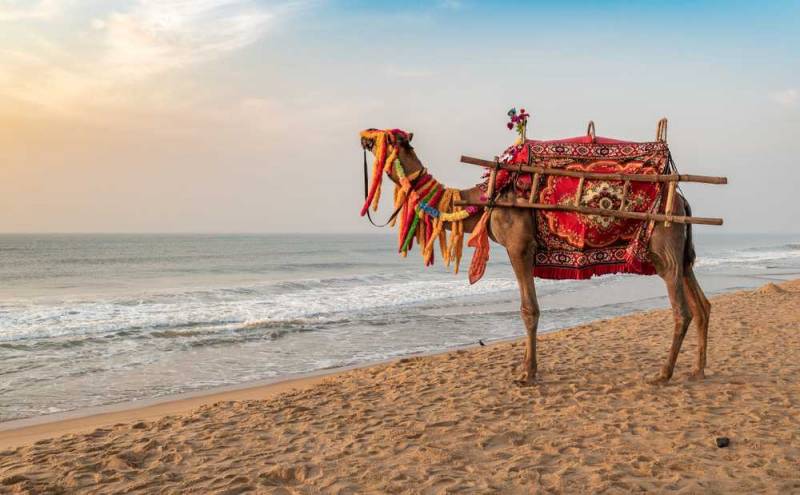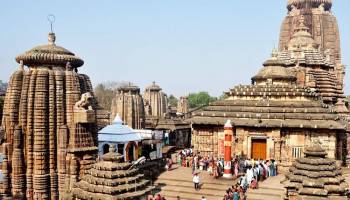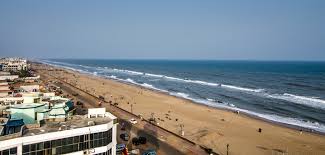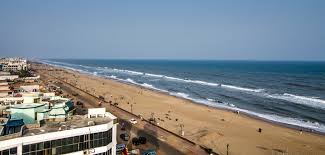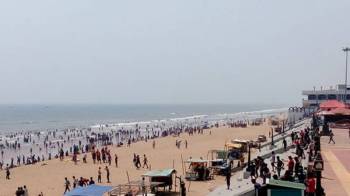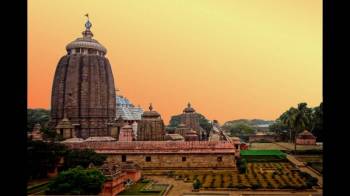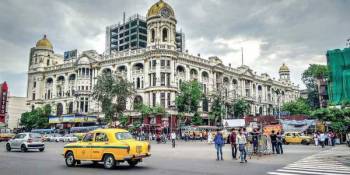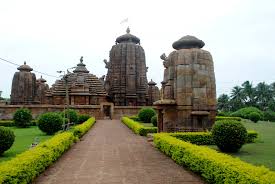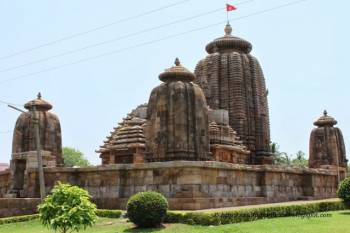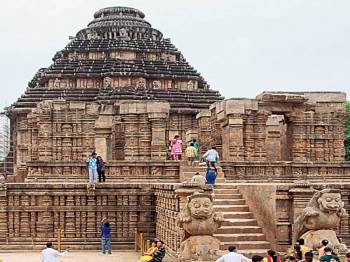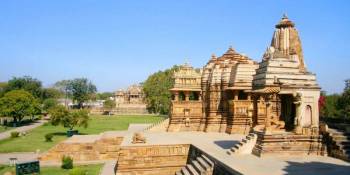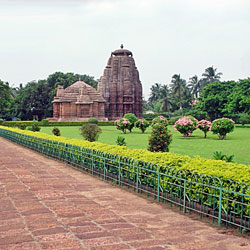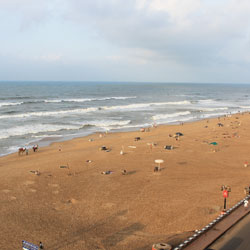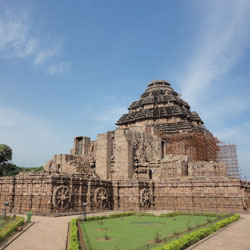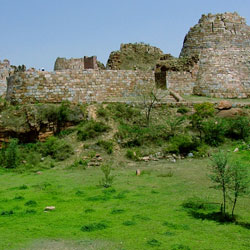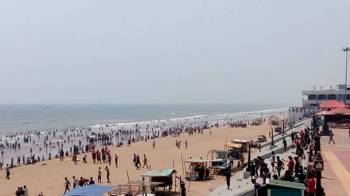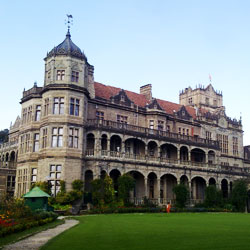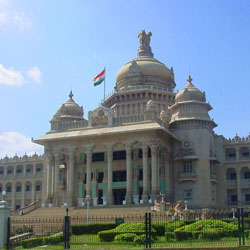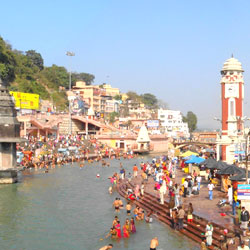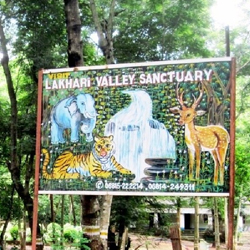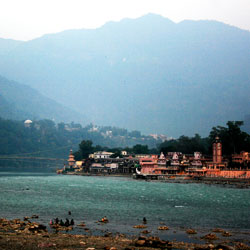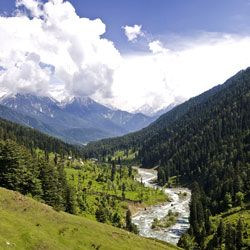- Sailashree Vihar, Bhubaneswar, Odisha
- View Mobile Number
Puri BBSR Chilka Gopalpur 5 Days 4 Nights Tour
Link Copied
Duration : 4 Nights / 5 Days
Destination Covered : Puri, Bhubaneswar, Chilika, Rajarani Temple, Lingaraj Temple, Dhauli Hill, Jagannath Temple
Tour Activities : Beaches and Islands, Religious & Pilgrimage, Lakes & Rivers
Tour Themes : Religious & Pilgrimage
Price on Request
Puri, Bhubaneswar and Chilika Tour Itinerary
Day 1
Arrival at Puri Rly. Stn. Receive and transfer to hotel. After freshen up visit the world famous Lord Jagannath temple.The majestic Jagannath Temple in Puri is a major pilgrimage destination for Hindus and is a part of the “Char Dham” pilgrimages. Jagannatha is not the only deity worshipped in the temple, though it is known as the 'Jagannatha Temple'. The deities of the Puri temple are generally known as the Trimurti (trinity) and also as Chaturdhamurti. The temple was originally built by the Kalinga ruler Anantavarman Chodaganga(1078 - 1148 CE). Much of the present structure was built by King Ananga
Bhima Deva in the year 1174 CE. It took 14 years to complete and was consecrated in 1198 CE.
Continue to drive towards Konark the Chariot of the Sun God temple, built by Laqngula Narasingh Deva in 13th century A.D.. The Sun temple is known for its exquisite and intricate architecture and sculptures, an UNSECO World Heritge List of monument. The word 'Konark' is a combination of two words 'Kona' and 'Arka'. 'Kona' means 'Corner' and 'Arka' means 'Sun', so when combines it becomes 'Sun of the Corner', dedicated to Sun God. Konark is also known as Arka khetra. There are three different sides of the temple, positioned in proper direction to catch the rays of the sun at morning, noon and evening.King Narasimhadeva the great ruler of the Ganga dynasty had built this temple, with the help of 1200 artisans within a period of 12 years (1243-1255 A.D.). Since the ruler used to worship the Sun, the temple was considered as a chariot for the Sun God. Konark Temple was designed in the form of a gorgeously decorated chariot mounted on 24 wheels , each about 10 feet in diameter, and drawn by 7 mighty horses. It is really difficult to understand, how this huge temple, every inch-space of which was so wonderfully carved, could have been completed within such a short time. Whatever that might be, the konark temple even in its present ruined state, still a wonder to the whole world. Great poet Rabindranath Tagore wrote of Konark: "here the language of stone surpasses the language of man."
Drive back to Puri, evening enjoy beach marketing and relax on beach. Overnight at hotel.
Bhima Deva in the year 1174 CE. It took 14 years to complete and was consecrated in 1198 CE.
Continue to drive towards Konark the Chariot of the Sun God temple, built by Laqngula Narasingh Deva in 13th century A.D.. The Sun temple is known for its exquisite and intricate architecture and sculptures, an UNSECO World Heritge List of monument. The word 'Konark' is a combination of two words 'Kona' and 'Arka'. 'Kona' means 'Corner' and 'Arka' means 'Sun', so when combines it becomes 'Sun of the Corner', dedicated to Sun God. Konark is also known as Arka khetra. There are three different sides of the temple, positioned in proper direction to catch the rays of the sun at morning, noon and evening.King Narasimhadeva the great ruler of the Ganga dynasty had built this temple, with the help of 1200 artisans within a period of 12 years (1243-1255 A.D.). Since the ruler used to worship the Sun, the temple was considered as a chariot for the Sun God. Konark Temple was designed in the form of a gorgeously decorated chariot mounted on 24 wheels , each about 10 feet in diameter, and drawn by 7 mighty horses. It is really difficult to understand, how this huge temple, every inch-space of which was so wonderfully carved, could have been completed within such a short time. Whatever that might be, the konark temple even in its present ruined state, still a wonder to the whole world. Great poet Rabindranath Tagore wrote of Konark: "here the language of stone surpasses the language of man."
Drive back to Puri, evening enjoy beach marketing and relax on beach. Overnight at hotel.
Day 2
After freshen up in hotel visit Gundicha temple, the abode of Jagannath, Balabhadra and Subhadra for 9 days in-between Rath Yatra festival to Bahuda Yatra.
Then visit Raghurajpur is 12Km from Puri- the artisans’ village, is a living museum itself. Every household has a painter and can show you lavishly painted, the age-old tradition paintings on canvas, skil (tassar) and other varieties like Pattachitra, papiermache, masks, stone idols, sculptures, wooden idils and toys and many more.The recently drawn mural paintings on the house walls are a step forward to make impression about survival of the past glory. One can contact any house in this village for the painting. The village ambience is also heart touching. This is a Heritage Craft Village of Odisha.
Then visit Sakhigopal also known as SakhigopalSatyabadi--is famous for the shrine of Lord Krishna. Although the Sakhigopal temple was built during the 19th century, the legend has it that the Krishna image was brought here by King Prataprudra Deva after his victory over Kanchi (South India).The life-size image is standing with flute and Radha is standing on the left side. The images are very beautiful and impressive. Back to Puri. Free at beach for beach activities. Back to Hotel overnight at Hotel.
Then visit Raghurajpur is 12Km from Puri- the artisans’ village, is a living museum itself. Every household has a painter and can show you lavishly painted, the age-old tradition paintings on canvas, skil (tassar) and other varieties like Pattachitra, papiermache, masks, stone idols, sculptures, wooden idils and toys and many more.The recently drawn mural paintings on the house walls are a step forward to make impression about survival of the past glory. One can contact any house in this village for the painting. The village ambience is also heart touching. This is a Heritage Craft Village of Odisha.
Then visit Sakhigopal also known as SakhigopalSatyabadi--is famous for the shrine of Lord Krishna. Although the Sakhigopal temple was built during the 19th century, the legend has it that the Krishna image was brought here by King Prataprudra Deva after his victory over Kanchi (South India).The life-size image is standing with flute and Radha is standing on the left side. The images are very beautiful and impressive. Back to Puri. Free at beach for beach activities. Back to Hotel overnight at Hotel.
Day 3
After breakfast drive to Bhubaneswar, Bhubaneswar Known as the “Temple City”,founded during the Kalinga empire over 3,000 years ago, Bhubaneswar today boasts of a cluster of magnificent temples, which once boasted of more than 2000 temples. still preserves over 500 of India's finest temples.
Enroute Pipli the artist village where locals produce appliqué art- a process of cutting coloured cloth into shapes of animals, birds, flowers, leaves , gods, goddesses and other decorative motifs and stiching them over a piece of cloth. These creations are fabricated into lampshades, handbags, cushion covers, or even garden umbrellas.
Continue with Dhauli, where a modern peace pagoda and ancient rock edictsmark the emperor Asshoka;s conversion to Buddhism. Dhauli , a sacred Buddhist ssite on the banks of then river Daya, where the great Kalingan war was taken place. Revered by Buddhists as the place where ancient Indian emperor Ashoka renounced violence and embraced Budddddhism, the site pagoda , and see two of the rock-carved edicts declaring Ashoka’s new religious principles that date from 260 BC. Then view some rock-cut caves, medieval Hindu temples, and the renovated Shiva temple near Pagoda.
Also visit Lingaraj Temple Constructed in 650 A.D. this temple is a unique specimen of Oriyan style of architecture. The most special feature of this temple is the presence of one thousand lingas in the north-west corner of the complex.. Dedicated to Lord Shiva as the name suggests, the temple was built sometime in the 7th century by the King Jajati Keshari. The Lingraj Temple houses a Shivalingam that rises to a massive height of 8 inches above the floor level and is about 8 feet in diameter as well. Lingaraj Temple is a spectacular specimen of Orissa style of temples with a hint of Kalinga style of architecture, covering a vast area of 2,50,000 sq ft., stand tall 180 ft.As many as 150 smaller shrines dot the temple complex. Non-Hindus are not allowed inside the temple.
Then visit Rajarani temple
A popular 11th-century the Raja Rani Temple is locally known as the 'love temple' because it contains some sensuous carvings of women and couples. No images can be found inside the sanctum, and hence the temple is not associated with any particular sect of Hinduism. This is perhaps exactly where the charm of the temple comes from: the temple belongs to no specific sect and is open to all people irrespective of the deity that they worship and admire. However, the figures of Lord Shiva and Goddess Parvati carved on the walls strongly indicate that the temple has certain associations with Shaivism.
Brahmeshwar Temple was built during 11th century A.D in honor of the presiding deity Brahmeshwar, who is a form of Lord Shiva. The 60-feet tall temple was the first to exhibit iron beams in construction and splendid iconography of dancers and musicians on the walls. The porch features carved ceiling with lotus, while the walls have motifs of lion head in abundance.
Mukteshwar Temple is one of the most compact and smallest temples in Bhubaneswar, but is renowned for its imposing ceiling that is adorned with eight-petal lotus in the porch, and astounding stone archway. It was for the first time that carved images appeared in temple architecture, exhibiting beautiful lion-head motifs. “Mukteshwar” means “Lord who gives freedom through Yoga.”
Parshurameswar temple The small but luxuriantly designed temple was built during 7th century and is one of the oldest in Bhubaneswar. The temple exhibits marvelous architectural artwork.
Afte lunch visit khandagiri and Udaygiri caves and explore the age-old caves of Khandagiri and Udaygiri, carved by jain Monks in the 1st century BC, and were used as dwellings and meditation quarters, were built under King Kharvela of the Mahameghavahan dynasty. Overnight at hotel. Overnight at Hotel.
(If not interested for temples tour can visit State Museum, Tribal Museum, Nandan kanan )
Enroute Pipli the artist village where locals produce appliqué art- a process of cutting coloured cloth into shapes of animals, birds, flowers, leaves , gods, goddesses and other decorative motifs and stiching them over a piece of cloth. These creations are fabricated into lampshades, handbags, cushion covers, or even garden umbrellas.
Continue with Dhauli, where a modern peace pagoda and ancient rock edictsmark the emperor Asshoka;s conversion to Buddhism. Dhauli , a sacred Buddhist ssite on the banks of then river Daya, where the great Kalingan war was taken place. Revered by Buddhists as the place where ancient Indian emperor Ashoka renounced violence and embraced Budddddhism, the site pagoda , and see two of the rock-carved edicts declaring Ashoka’s new religious principles that date from 260 BC. Then view some rock-cut caves, medieval Hindu temples, and the renovated Shiva temple near Pagoda.
Also visit Lingaraj Temple Constructed in 650 A.D. this temple is a unique specimen of Oriyan style of architecture. The most special feature of this temple is the presence of one thousand lingas in the north-west corner of the complex.. Dedicated to Lord Shiva as the name suggests, the temple was built sometime in the 7th century by the King Jajati Keshari. The Lingraj Temple houses a Shivalingam that rises to a massive height of 8 inches above the floor level and is about 8 feet in diameter as well. Lingaraj Temple is a spectacular specimen of Orissa style of temples with a hint of Kalinga style of architecture, covering a vast area of 2,50,000 sq ft., stand tall 180 ft.As many as 150 smaller shrines dot the temple complex. Non-Hindus are not allowed inside the temple.
Then visit Rajarani temple
A popular 11th-century the Raja Rani Temple is locally known as the 'love temple' because it contains some sensuous carvings of women and couples. No images can be found inside the sanctum, and hence the temple is not associated with any particular sect of Hinduism. This is perhaps exactly where the charm of the temple comes from: the temple belongs to no specific sect and is open to all people irrespective of the deity that they worship and admire. However, the figures of Lord Shiva and Goddess Parvati carved on the walls strongly indicate that the temple has certain associations with Shaivism.
Brahmeshwar Temple was built during 11th century A.D in honor of the presiding deity Brahmeshwar, who is a form of Lord Shiva. The 60-feet tall temple was the first to exhibit iron beams in construction and splendid iconography of dancers and musicians on the walls. The porch features carved ceiling with lotus, while the walls have motifs of lion head in abundance.
Mukteshwar Temple is one of the most compact and smallest temples in Bhubaneswar, but is renowned for its imposing ceiling that is adorned with eight-petal lotus in the porch, and astounding stone archway. It was for the first time that carved images appeared in temple architecture, exhibiting beautiful lion-head motifs. “Mukteshwar” means “Lord who gives freedom through Yoga.”
Parshurameswar temple The small but luxuriantly designed temple was built during 7th century and is one of the oldest in Bhubaneswar. The temple exhibits marvelous architectural artwork.
Afte lunch visit khandagiri and Udaygiri caves and explore the age-old caves of Khandagiri and Udaygiri, carved by jain Monks in the 1st century BC, and were used as dwellings and meditation quarters, were built under King Kharvela of the Mahameghavahan dynasty. Overnight at hotel. Overnight at Hotel.
(If not interested for temples tour can visit State Museum, Tribal Museum, Nandan kanan )
Day 4
After breakfast check out from hotel drive to Barkul Chilka. Take a boat ride (on direct payment). Enjoy some points by boat like Nalbaan- is a big island in the centr of lake. The island completely submerges in the monsoon. It is a treat for bird watchers in winter season. Mangalajodi – is a village located on northern banks of Chilika lake. The bird’s paradise hosts more than 3,00,000 birdsin its marshy waters. Bird island – watch birds in their natural habitat. Kalijai Island – its a temple of Goddessess kalijai.
After lunch drive to Gopalpur. Gopalpur beach is famous for most picturesque seashores and gusty cool breeze all the time. The calmness of the beach is contagious that it soothes the senses. People come to the beach for improvement of health. Evening relaxes at the beach. Overnight at Gopalpur.
Also visit old lighthouse situated on the beach made by Britishers provides a 360-degree view of Gopalpur. Can also visit the fisherman village nearby. Can visit hilltop temple Taratarini, which is a beautiful place of pilgrimage with amidst scenic surrounds
After lunch drive to Gopalpur. Gopalpur beach is famous for most picturesque seashores and gusty cool breeze all the time. The calmness of the beach is contagious that it soothes the senses. People come to the beach for improvement of health. Evening relaxes at the beach. Overnight at Gopalpur.
Also visit old lighthouse situated on the beach made by Britishers provides a 360-degree view of Gopalpur. Can also visit the fisherman village nearby. Can visit hilltop temple Taratarini, which is a beautiful place of pilgrimage with amidst scenic surrounds
Day 5
On time pick up from hotel and provide departure transfer to Bhubaneswar Airport or Rly.Stn. for onward journey.
More Details about Puri, Bhubaneswar and Chilika Tour
Inclusions
- CP (Room + Breakfast)
- Accommodation on twin sharing basis hotels as per the plan mentioned against each hotel
- All Transfers, Sightseeing & Excursion by A/C Vehicle as specified in the itinerary
- All Parking, Toll Taxes and driver’s allowances
- All currently applicable taxes & GST
Exclusions
- Any air/train fare
- Insurance, Guide Services / Boat ride in Chilka lake, Entrance fee at monument.
- Expenses of Personal Nature like laundry, telephone calls, room service, alcoholic beverages, mini bar charges, tips, portage, camera fees, etc.
- Any meals and services not specified in the tour cost includes the column
- In case of unavailability in the listed hotels, arrangements for an alternate accommodation will be made in a hotel of a similar standard.
Rate Card
Hotel Ratecard
2 * Hotel in Bhubaneswar:- Miland Palace or Treebo Kings Court &
2* Hotel in Puri – Land mark or Naren Palace
2 * Hotel in Gopalpur – Song Of the sea / Sea pearl / Sea View
3 * Hotel in Bhubaneswar : - VITS / Empire or Excellenccys
3 * Hotel in Puri : - Empire / Sri Hari International or Blue Lilly
3 * Hotel in Gopalpur – Swosti Palm Resort
4 * Hotel in Bhubaneswar - The Crown/ HHI / New Marrion / Swosti Premium
4 * Hotel in Puri – Pramod Convention/ Haans coco Palm/ Chariot/ East / West
5 * On Request
Vehicle
For 2 to 3 Pax AC Swift Dezire
For 4 to 6 Pax AC Innova
For 7 to 13 Pax 13 Sater AC Tempo Traveler
Please note: these rates are not valid during Durga Puja & Holi, Ratha Yatra, New Year time, Christmas time, Independence & Republic day, Medical or other Conference time.
2* Hotel in Puri – Land mark or Naren Palace
2 * Hotel in Gopalpur – Song Of the sea / Sea pearl / Sea View
3 * Hotel in Bhubaneswar : - VITS / Empire or Excellenccys
3 * Hotel in Puri : - Empire / Sri Hari International or Blue Lilly
3 * Hotel in Gopalpur – Swosti Palm Resort
4 * Hotel in Bhubaneswar - The Crown/ HHI / New Marrion / Swosti Premium
4 * Hotel in Puri – Pramod Convention/ Haans coco Palm/ Chariot/ East / West
5 * On Request
Vehicle
For 2 to 3 Pax AC Swift Dezire
For 4 to 6 Pax AC Innova
For 7 to 13 Pax 13 Sater AC Tempo Traveler
Please note: these rates are not valid during Durga Puja & Holi, Ratha Yatra, New Year time, Christmas time, Independence & Republic day, Medical or other Conference time.
| Total Pax | Rates With 2* Hotel | Rates With 3* Hotel | Rates With 4* Hotel | Rates With 5* Hotel |
| Cost With 2 Pax | 14430 | 18190 | 22230 | On request |
| Cost With 4 Pax | 11550 | 15300 | 19350 | On request |
| Cost With 6 Pax | 9625 | 13375 | 17420 | On request |
| Cost with 8 pax | 11550 | 13860 | 17900 | On request |
| Cost With 10 Pax | 9240 | 13000 | 17000 | On request |
| Cost with 12 pax | 8660 | 12415 | 16500 | On request |
Payments Terms
- * 20% Advance Percentage of total booking amount
Cancellation & Refund Policy
- * Upon cancellation, refund will be made after deducting the Retention Amount.
Fill Enquiry Form Below

